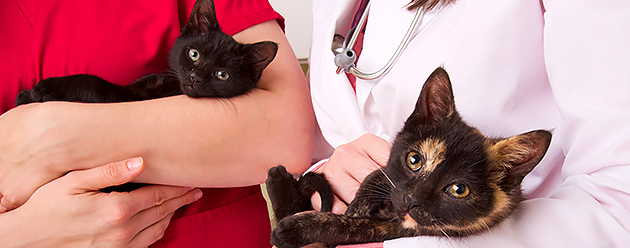
Veterinarians, Champions of the Human-Animal Bond
July 14, 2016
The connection between humans and animals is powerful. The human-animal bond can be made even more powerful with the help of veterinarians.
The connection between humans and animals is powerful. The human-animal bond can be made even more powerful with the help of veterinarians.
Veterinarians know the importance of the human-animal bond, especially when it comes to companion animals. Owners who have the strongest bonds with their pets are more likely to visit their veterinarian, follow their veterinarians’ recommendations, and seek preventive care.
Given this, how can veterinarians apply the power of the human-animal bond in their daily practice? Zoetis colleague, Dr. Oliver Knesl, recently co-authored an article addressing this question in the Journal of the American Veterinary Medical Association (JAVMA).
Communication is key
According to the article, communication is key. But not just any type of communication—the communication must be empathetic, engaging and educational.
-
Empathetic: the veterinarian understands the problem from the perspective of the owner.
-
Engaging: the veterinarian summarizes the conversation and invites feedback.
-
Educational: the veterinarian helps the owner understand their pet’s condition and treatment options.
Collaboration
Collaboration is important too. If the veterinarian unilaterally prescribes treatment (as has been traditionally done) or if the owner is given information only and left alone to decide treatment, it is not in the best interest of the animal, its owner, or the veterinarian. It is when the veterinarian and the owner work together that everyone benefits.
A gentle hand
Another way the human-animal bond comes into play in the veterinarian’s office is in the way an animal is handled by the veterinarian and other staff. Physically handling an animal, even restraining it when necessary, forms a central part of a veterinarian visit. But if the animal is fearful or aggressive, or if the veterinarian or staff is uncomfortable, the client may be inclined not to return. That’s why veterinarians have focused on reducing stress and anxiety during a visit.
Veterinarians have several ways to calm their patients. The first step is to recognize the signs of stress in an animal, keeping in mind the signs might be subtle and can vary by animal. Another tactic is to create the right environment through options like separate waiting areas for different species and dark and quiet spaces. Veterinarians can coach owners in how to prepare their pets for hospital visits and can recommend basket muzzles, specialized clothing or head halters.
A new way to ease pet anxiety
Other options also exist, namely sedatives and anti-anxiety medications. As noted in the article, “The development of faster-acting anti-anxiety medications and safer sedatives has made chemical restraint a reasonable alternative when other stress-reduction techniques are not effective or practical.”
Human-animal bond
Veterinarians have long known of the special connection between companion animals and their owners. They can apply various strategies to strengthen that bond, ultimately improving the health of their patients and the relationship with their clients.
To learn more, read the full article in the Journal of the American Veterinary Medical Association.